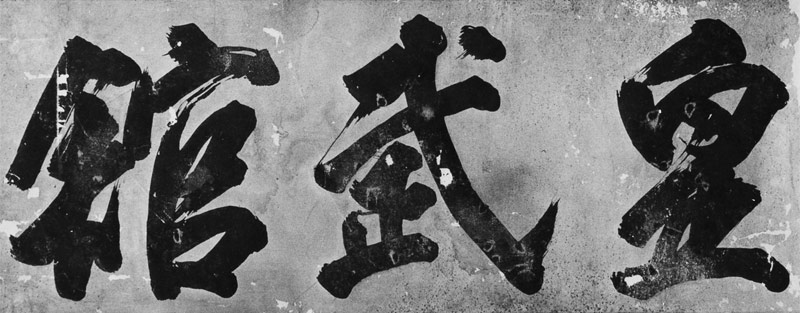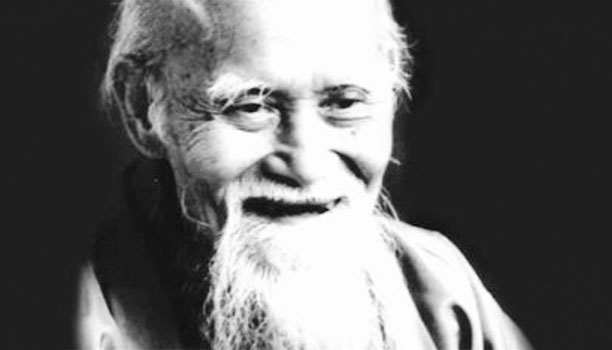-
The Art of Shikko and Suwari Waza in Aikido
Shikko 膝行, often referred to as knee-walking, is a fundamental movement method in Aikido. Aikido techniques performed from a seiza 正座 (seated) or shikko position are called suwari-waza 座り技. Suwari-waza is a distinguishing feature of Aikido, rarely seen in other martial arts. To understand why Aikido practices shikko and suwari-waza, one must trace back to Daito-ryu Aiki-jujutsu 大東流 合気柔術, which Morihei Ueshiba, the founder of Aikido, studied before establishing Aikido. Daito-ryu is said to be an Aizu han no otome-ryu 会津藩の御留流, a secret martial art of the Aizu 会津 domain. The Aizu han was a powerful and significant feudal domain during the Edo period 江戸時代, located in the westernmost region…
-
A Journey of Naming: From Daito Ryu to Aikido (Part I)
Aikido, renowned for its philosophy of harmony and non-resistance, has a rich history that traces its roots back to Daito Ryu Jujutsu 大東流柔術. During the evolution of Aikido, Ueshiba used various names for his art before settling on the term “Aikido 合気道”. Ueshiba had studied multiple martial arts, including Tenjin Shinyo Ryu 天神真楊流, Kito Ryu 起倒流, Yagyu Shinkage Ryu 柳生新陰流, and Judo 柔道 before encountering the martial arts master Sokaku Takeda 武田惣角. In 1915, Ueshiba came across Takeda during his exploratory journey in Hokkaido 北海道. Astonished by Takeda’s knowledge and techniques, he swiftly decided to become Takeda’s disciple. The following year, Ueshiba established a dojo in Shirataki 白滝村 and invited…
-
Kenji Tomiki and his Vision of Competitive Aikido
Kenji Tomiki 富木 謙治 was a scholar and a prominent martial artist who held an 8th dan in both Judo and Aikido. He was an early student of Morihei Ueshiba and played a crucial role in the development of Aikido and the establishment of Shodokan Aikido 昭道館合気道, also known as Tomiki Aikido. Born on March 15, 1900, in Kakunodate 角館町, Akita Prefecture 秋田県, Japan, Tomiki started training in Judo when he was about 10 years old and obtained his shodan rank in 1919. He continued to practice Judo and only in 1926, he was introduced to Morihei Ueshiba by his friend Hidetaro Mishimura, and started training in Aikido (still known…
-
Morihei Ueshiba’s Path from Kenjutsu to Aiki-Ken (Part I)
The origin of Aiki-ken can be traced back to Morihei Ueshiba, the founder of Aikido, and his study of various martial arts styles throughout his life. Some of the major ken-related arts that Ueshiba had exposure to include Yagyu Shinkage Ryu 柳生新陰流, Yagyu Shingan Ryu 柳生心眼流, Daito Ryu 大東流, and Kashima Shinto Ryu 鹿島新当流. In 1902, when Ueshiba was 19, he moved to Tokyo to start a stationery business but returned to Tanabe in less than a year due to a health problem. It was during this short period of time that he trained in Yagyu Shinkage Ryu, but it is unclear who his teacher was. Yagyu Shinkage Ryu was…
-
A Very Brief Biography of the Founder
Morihei Ueshiba 植芝 盛平, known as O-Sensei (Great Teacher 大先生) by his followers, is the founder of Aikido. He lived during a time of great social, political, and economic upheaval in Japan. Born in 1883 in Wakayama Prefecture 和歌山県, Ueshiba grew up in a country that was rapidly modernizing and westernizing, as the government implemented policies to modernize the country’s economy, education system, and military. As a young man, Ueshiba trained in a range of martial arts, including Jukenjutsu 銃剣術, Kenjutsu 剣術, Jujutsu 柔術 and Judo 柔道. He also served in the military during the Russo-Japanese War of 1904-1905, where he saw firsthand the devastating effects of violence and war.…




